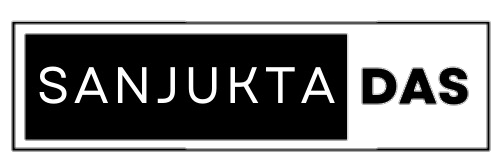Writing poetic metaphors that captivate readers is of utmost importance in creating powerful and engaging poetry. Metaphors transcend the boundaries of literal language, inviting readers to perceive the world through a fresh and imaginative lens. They infuse poems with vivid and evocative imagery, stirring emotions and sparking connections in the minds of readers. Well-crafted metaphors possess the ability to convey complex ideas, emotions, and experiences with brevity and intensity, leaving a lasting impact on the reader’s psyche. Through metaphors, poets can distill the essence of their themes, transforming the ordinary into the extraordinary and heightening the sensory experience of their words. Metaphors breathe life into poetry, making it a realm of boundless creativity and interpretation. They engage the reader’s intellect and emotions simultaneously, inviting them to participate actively in deciphering layers of meaning. A skillful use of metaphors grants the poet the power to transport readers to uncharted emotional territories, resonating with their own experiences and universal truths. As a result, writing poetic metaphors that captivate readers is an essential aspect of crafting profound and memorable poetry that lingers in the hearts and minds of the audience long after the words have been read.
What is a Poetic Metaphors?
A poetic metaphor is a powerful literary device used by poets to create striking and imaginative comparisons between two seemingly unrelated things. In a metaphor, one thing is equated with another, enhancing the reader’s understanding and appreciation of both. Unlike similes, which use “like” or “as” to make comparisons, metaphors directly assert that one thing is another.
Metaphors can be found in various forms of literature, but they are particularly prevalent in poetry due to their ability to add depth, richness, and emotional resonance to the verses. They serve as vehicles for poets to convey abstract ideas, complex emotions, and profound themes by drawing upon familiar images and experiences.
The key to crafting effective poetic metaphors lies in the poet’s ability to select the right words and associations. The more surprising or unconventional the comparison, the more impactful the metaphor becomes. Poets often use metaphors to reveal hidden connections and invite readers to see the world in a new light.
For example, when a poet writes, “Her smile is a ray of sunshine,” they are using a metaphor to liken the brightness and warmth of a smile to the cheerful and uplifting qualities of sunshine. By doing so, the poet not only evokes a visual image but also imbues the smile with the positive attributes associated with sunshine, such as happiness and optimism.
Metaphors can take on a multitude of forms, ranging from simple and straightforward to elaborate and extended. Extended metaphors are particularly powerful as they allow poets to sustain the comparison across several lines or throughout an entire poem, deepening the reader’s engagement and understanding.
In conclusion, poetic metaphors are essential tools that allow poets to transform ordinary language into a canvas of imaginative and evocative expressions. They enrich poetry with layers of meaning, emotional resonance, and unique perspectives, making it a profoundly moving and enriching experience for both the writer and the reader.
Why are Poetic Metaphors important?
Poetic metaphors hold immense importance in literature, acting as the lifeblood that breathes vitality and depth into the art of poetry. These imaginative comparisons serve as vehicles of expression, enabling poets to transcend the confines of ordinary language and convey profound ideas, emotions, and themes in a captivating manner.
One of the primary reasons why poetic metaphors are essential is their ability to amplify the impact of poetry. By associating one object, idea, or emotion with another, metaphors generate powerful images that resonate with readers on an emotional and intellectual level. Through these comparisons, poets can evoke a wide range of emotions, from joy and nostalgia to sorrow and longing. The emotional resonance that metaphors create ensures that readers connect with the poem on a deeply personal level, forging an emotional bond that lingers in their hearts long after they have finished reading.
Moreover, metaphors enrich the language of poetry, transforming it into a tapestry of vivid and evocative expressions. By breaking away from literal descriptions, metaphors encourage readers to engage their imagination and think beyond the surface meaning of words. This engagement with language enhances the overall reading experience, stimulating intellectual curiosity and contemplation. As a result, poems that employ well-crafted metaphors stand out in their linguistic beauty and artistry, leaving a lasting impression on readers.
Additionally, metaphors are powerful tools for poets to create unique and distinct voices. A poet’s choice of metaphors reflects their individual perspective and style, distinguishing them from other writers. Poetic metaphors are a reflection of the poet’s creative vision, and by skillfully employing original and thought-provoking comparisons, they can carve out their artistic identity in the literary landscape.
Furthermore, metaphors serve as catalysts for creativity and innovation in poetry. When poets push the boundaries of comparison and imagination, they open new pathways of expression and thought. Extended metaphors, for instance, allow poets to sustain a comparison throughout an entire poem, creating a cohesive and immersive reading experience. The process of crafting metaphors encourages poets to explore novel associations, unearthing fresh connections and insights that breathe life into their verses.
In conclusion, poetic metaphors are indispensable to the world of poetry for various reasons. They infuse poems with emotional resonance, elevate language to new heights, foster individuality and creativity in poets, and drive innovation in the art form. By tapping into the power of metaphorical language, poets can create timeless works that resonate with readers across time and cultures. Poetic metaphors represent the heart and soul of poetry, as they awaken the imagination, stir emotions, and transform words into transcendent works of art.
How Should Poetic Metaphors Captivate Readers?
Poetic metaphors captivate readers by engaging their senses, emotions, and intellect. To achieve this captivating effect, poets can employ various methods and techniques that evoke strong imagery and emotional resonance.
- Vivid and Sensory Language: Effective metaphors use vivid and sensory language to create a multisensory experience for readers. By appealing to sight, sound, taste, touch, and smell, metaphors make the poem come alive, allowing readers to immerse themselves in the imagery. For example, in Langston Hughes’ poem “Harlem,” the metaphor “a raisin in the sun” vividly captures the dream of African Americans, describing how deferred dreams can dry up like a raisin left in the sun.
- Surprising or Unexpected Comparisons: Metaphors that offer unexpected or unconventional comparisons tend to leave a lasting impact on readers. When poets surprise their audience with a fresh perspective or an unusual association, it piques their curiosity and ignites their imagination. Emily Dickinson’s metaphor “Hope is the thing with feathers” challenges the conventional portrayal of hope, evoking the image of a bird that soars despite adversity.
- Emotional Resonance: Powerful metaphors tap into universal emotions, eliciting empathy and connecting with readers’ personal experiences. When readers can relate to the emotions conveyed through a metaphor, it creates an emotional bond, making the poem deeply meaningful. An example can be found in Maya Angelou’s poem “Still I Rise,” where the metaphor “I’m a black ocean, leaping and wide” conveys strength and resilience in the face of oppression.
- Extended Metaphors: Sustaining a metaphor throughout a poem or even an entire poetic sequence can intensify its impact and captivate readers with its consistency and depth. By extending the comparison, poets explore various facets of the metaphor, revealing nuanced layers of meaning. In Robert Frost’s poem “The Road Not Taken,” the metaphor of the two diverging paths serves as an extended exploration of life choices and regrets.
- Originality and Creativity: Captivating metaphors often arise from the poet’s unique perspective and creativity. By combining disparate elements or introducing innovative associations, poets can create metaphors that stand out and linger in readers’ minds. Sylvia Plath’s poem “Metaphors” presents a series of creative and unexpected comparisons to depict the experience of pregnancy.
- Relevance to the Theme: Metaphors that align closely with the poem’s theme or message contribute to the poem’s cohesiveness and impact. When the metaphor enhances the overall meaning of the poem, it reinforces the poet’s intent and leaves a lasting impression on readers. In Robert Burns’ poem “A Red, Red Rose,” the metaphor of the enduring love is in harmony with the poem’s theme of eternal affection.
Captivating poetic metaphors result from skillful craftsmanship, creativity, and emotional resonance. By employing vivid language, unexpected comparisons, emotional depth, extended exploration, and originality, poets can create metaphors that transport readers to a world of imagination and emotion. Captivating metaphors enrich the reading experience, leaving readers moved, enlightened, and inspired by the power of poetic language.
Tips for Writing Poetic Metaphors
Writing poetic metaphors that captivate readers involves a thoughtful and creative approach. Here’s a step-by-step guide with detailed explanations and examples to help you craft captivating metaphors in your poetry:
- Identify the Theme or Message: Before diving into writing metaphors, clarify the theme or message you want to convey in your poem. Understanding the central idea will guide you in selecting metaphors that align with and enhance your intended meaning.
- Brainstorm Possible Comparisons: Start by brainstorming different objects, concepts, or emotions related to your theme. Then, think about how these elements could be compared to create intriguing and evocative metaphors. Consider both literal and abstract associations.
- Choose Strong and Visual Metaphors: Opt for metaphors that evoke vivid and visual images in the reader’s mind. Strong visual language paints a picture, allowing readers to experience the metaphor and feel connected to the emotions conveyed. For instance, instead of saying “she was sad,” you might write, “her tears were a river flowing through her heart.”
- Surprise and Delight Your Readers: Look for unexpected or unconventional comparisons that surprise and delight your readers. Unusual metaphors engage their imagination and make the poem more memorable. For example, “his laughter was a cascade of fireflies dancing in the night sky.”
- Tie the Metaphor to Emotions: A captivating metaphor should evoke emotions that resonate with readers. Consider the emotional impact you want to achieve and choose metaphors that connect with those feelings. For instance, “her smile was a sunbeam that warmed my soul.”
- Employ Extended Metaphors: To create a lasting impact, consider using extended metaphors that span several lines or stanzas. Extended metaphors allow you to explore the comparison in more depth, providing a richer and immersive experience for the reader. For example, “life is a journey, where each step leads us to new horizons, and each fork in the road presents choices that shape our destiny.”
- Be Original and Creative: Dare to be inventive and explore unique associations between different elements. Original and creative metaphors stand out and captivate readers with their ingenuity. For instance, “her laughter was a symphony of moonlit stars.”
- Ensure Relevance to the Poem: Ensure that your metaphors are closely related to the poem’s theme and message. Metaphors that align with the poem’s intent create a cohesive and impactful reading experience. For example, in a poem about resilience, you might use a metaphor like “she was a phoenix rising from the ashes of adversity.”
- Revise and Refine: Once you’ve written your metaphors, review your poem and assess the effectiveness of each comparison. Revise and refine as needed to ensure your metaphors enhance the poem’s overall impact.
In conclusion, writing poetic metaphors that captivate your readers requires a combination of creativity, emotional resonance, and attention to detail. By selecting strong visual metaphors, surprising your readers, tying the metaphors to emotions, and employing originality, extended metaphors, and relevance to your theme, you can create poetry that leaves a lasting impression and resonates deeply with your audience. Remember to embrace the power of imagination and language to craft metaphors that breathe life into your verses and elevate your poetry to new heights.






